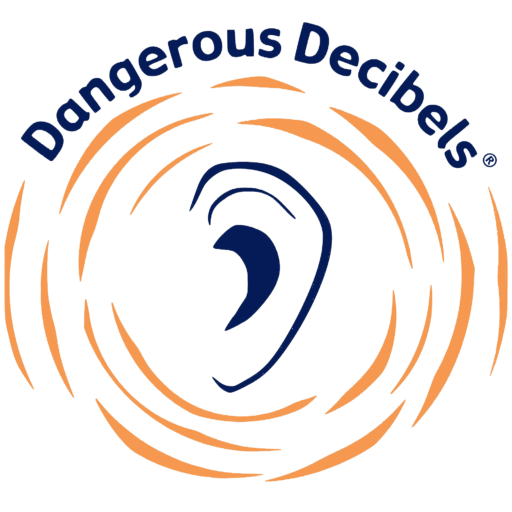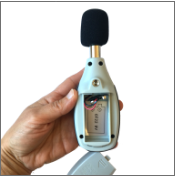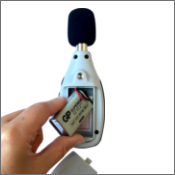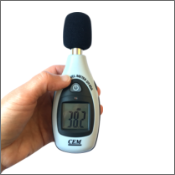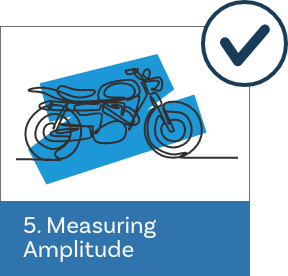Science of Sound: 5. Measuring Amplitude
Try It!
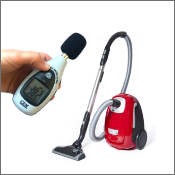
Now its your turn to try to make some measurements with your sound level meter.
- Get your sound level meter ready. Turn the sound level meter over. Slide the back panel downward and remove it. Insert the battery, connecting the positive and negative contacts correctly. Slide the back cover in place. Press the power button to check to make sure it is functioning correctly. You should see numbers appear if it powers on (it should be using the dBA scale). Otherwise, you may need to tighten the battery connections or try a new battery.
- Pick 3 sound sources in your house, school or neighborhood (e.g. TV, blender, lawnmower, etc.).
- Hold the sound level meter about 3 feet away from the source with the microphone pointed toward the source. Read the dBA value off the display. You have just measured the amplitude of the sound waves!
Note: Sounds that fluctuate in amplitude will make the decibel readings jump up and down. This will likely happen if you try to measure people talking or music playing. More sophisticated sound level meters can average the sound levels over time to get more accurate readings.
- When you’re done it’s important to take care of your sound level meter (SLM) so that it always works well and is available next time you want to measure sound levels.

Here’s some tips:
- Keep the SLM dry
- Store the SLM at room temperature
- Handle the SLM gently, avoid dropping
- Keep the SLM clean, wipe it with a lightly dampened cloth, avoid harsh cleaners. Disinfectant hand wipes work well.
- Remove the batteries and store them separately if the sound level meter is not used for long periods of time.
- Keep spare, fresh batteries on-hand
5. Measuring Amplitude
Enter the name of each item you measured below, and the decibel reading you got.
Quiz
